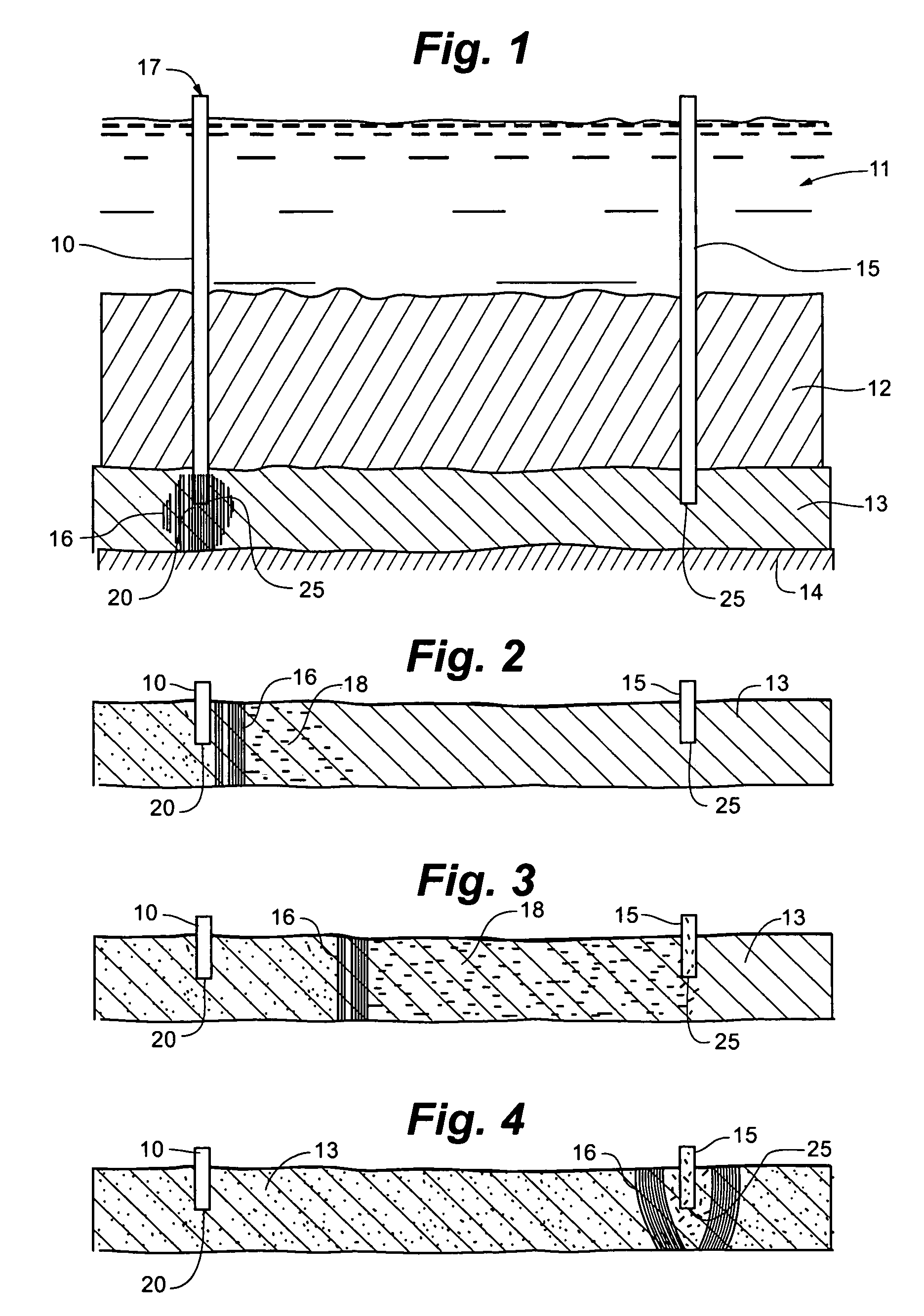Method of treating a hydrocarbon bearing formation
a technology of hydrocarbon bearing and hydrocarbon treatment, which is applied in the direction of fluid removal, chemistry apparatus and processes, borehole/well accessories, etc., can solve the problems of uneven combustion front, high cost of other additives, and high cost of approaches, so as to achieve efficient removal of all oil
- Summary
- Abstract
- Description
- Claims
- Application Information
AI Technical Summary
Benefits of technology
Problems solved by technology
Method used
Image
Examples
Embodiment Construction
[0036]FIG. 1 shows an undersea oil well which has been subjected to primary / secondary removal by means of an injection well 10. Beneath the sea 11 there are various core strata 12, a residual oil bearing formation 13 and an underling bed rock 14. A producing borehole 15 with inlet 20 and the injection borehole 10 with outlet 25 extend into the formation 13. As depicted in FIG. 1, inlet 20 and outlet 25 may be at separate locations or, alternatively, the inlet and outlet could be one and the same, e.g. the production well is also injection well 10 having inlet 20 and outlet 25. In the case of a North Sea oilfield such as the Gullfaks field, the formation 13 might be consolidated sandstone which has a large quantity of adhering oil and which is flooded with formation and injection water containing no oxygen.
[0037]Injection water 17 is introduced into the formation 13 via the injection well 10. If there are no suitable anaerobic bacteria present in the formation 13 either naturally or ...
PUM
 Login to View More
Login to View More Abstract
Description
Claims
Application Information
 Login to View More
Login to View More - R&D
- Intellectual Property
- Life Sciences
- Materials
- Tech Scout
- Unparalleled Data Quality
- Higher Quality Content
- 60% Fewer Hallucinations
Browse by: Latest US Patents, China's latest patents, Technical Efficacy Thesaurus, Application Domain, Technology Topic, Popular Technical Reports.
© 2025 PatSnap. All rights reserved.Legal|Privacy policy|Modern Slavery Act Transparency Statement|Sitemap|About US| Contact US: help@patsnap.com


